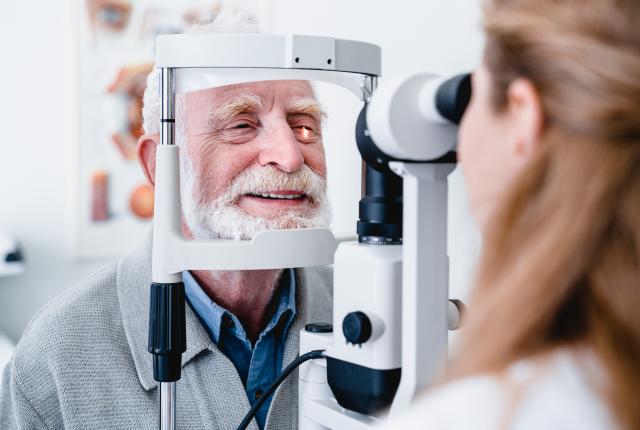
Glaucoma is a common eye problem that causes vision loss and, if untreated, can cause blindness.
Usually the deterioration is very gradual and not noticeable, so regular eye examinations are recommended for people from middle age.
Once detected, glaucoma can be treated to prevent or delay further vision damage. Unfortunately, while it can be managed, glaucoma can’t be prevented.
GLAUCOMA SYMPTOMS
Most people with glaucoma have few to no symptoms until their eyesight is damaged.
People with angle closure glaucoma can get blurred vision, pain and a red eye, and might see haloes around bright lights.
They can also feel nauseous, with headaches and vomiting. This is an emergency and you should seek treatment straight away so you don’t lose vision.
WHO IS AT RISK?
You are at higher risk of developing glaucoma if you:
• have a close relative with glaucoma
• have high eye pressure
• are over 50
• are short-sighted or long-sighted
• use cortisone (steroid) medications for long periods
• have diabetes
• have high or low blood pressure
• have migraine headaches
• have had an eye operation or eye injury
HOW IS GLAUCOMA DIAGNOSED?
An optometrist or ophthalmologist (specialist eye doctor) can detect it early on if you have regular eye examinations every 2 to 3 years.
They will look at the nerve fibres and the structure of the eye drainage network, test the field of vision and measure the eye pressure. This examination will take 20 to 45 minutes.
If you are of African or Asian descent, these regular examinations should start at age 40. Otherwise, you should start them at age 50.
HOW IS IT TREATED?
If you have angle-closure glaucoma, treatment will need to be provided quickly to reduce the pressure. This may be done with eye drops or intravenous medication. You may also need surgery.
Nerve cells damaged by glaucoma can’t be repaired. Treatment is designed to prevent or slow further damage, mainly by reducing the pressure in the eye. This involves:
• eye drops or medicine
• laser surgery or other surgery to open or create a new drainage channel
Glaucoma surgery is usually a day or outpatient procedure. You might have a local anaesthetic (such as eye drops) or a general anaesthetic. Your surgeon will explain to you the preferred type of surgery and anaesthetic for your condition.
Source: www.healthdirect.gov.au.






